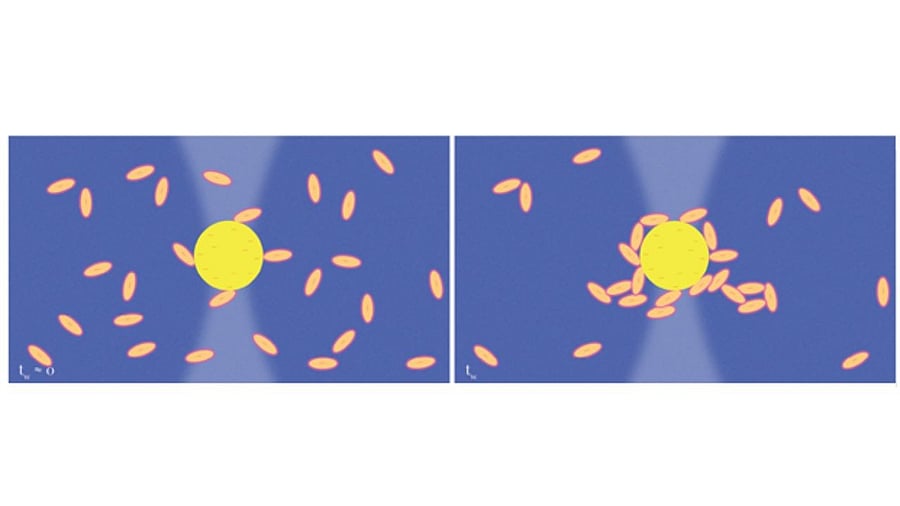
Schematic representation of the mechanisms governing the adsorption process of clay nanoplatelets on a Latex microsphere.
Credit: Department of Science & Technology
Bengaluru: Researchers at the Raman Research Institute (RRI) in Bengaluru have found a new way to study adsorption in real time, using a fascinating tool: optical tweezers.
At the microscopic level, adsorption is a surface process that occurs when molecules, atoms or ions stick to a surface. It plays a big role in everyday processes like water purification, spray painting, and industrial coatings.
The technique of manipulating a micron-sized object using light is known as optical tweezer and was awarded the physics Nobel Prize in 2018.
As explained by Prof Ranjini Bandyopadhyay, lead of RRI’s RheoDLS lab, optical tweezers are focused beams of light (in this case, infrared lasers) that can “grab” microscopic particles like a tiny pair of invisible fingers. When this laser is focused tightly enough, it creates a high-energy zone that can trap particles like latex spheres — roughly one micron in size —in a stable position. These trapped spheres were placed in a solution containing much smaller laponite clay particles.
Surprisingly, even though both the latex and the clay particles are negatively charged (which should cause them to repel each other), the clay particles stuck to the latex.
This, the researchers found, was due to van der Waals forces—a type of attraction that kicks in when particles get extremely close, at just a few nanometers apart. This kind of attraction is always present between materials, and it explains why these similarly charged particles were still able to adhere.
But the team didn’t stop there. They applied an electric field while holding the latex sphere in the optical trap. Since the latex sphere picks up some of the clay particles’ charge when they stick to it, measuring its movement under the electric field helps determine how much charge was added — and therefore, how much adsorption has taken place. By adding salt in the solution, the researchers could tune the pace of the interaction between the clay and latex spheres.
This method allowed them to track adsorption in real time, recording up to 30,000 measurements per second.
“Adsorption is already used in wastewater treatment—for instance, passing dirty or slightly charged industrial effluents over a charged surface to trap and remove impurities. It’s also used in coatings, like spray painting rubber. But what we’ve done is fundamentally different: we can now observe particles as they adsorb in real time, instead of just measuring bulk changes. This high temporal resolution can help make such industrial processes more precise and efficient,” Prof Bandyopadhyay added.
“This work enables real-time tracking of adsorption on a single particle and enables us to gain insights that were previously inaccessible through other techniques,” the first author Vaibhav Raj Singh Parmar, a PhD student at the Raman Research Institute, explained.